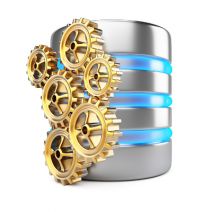SMART Blog
When Disaster Strikes, You’ll Be Happy Your IT is Redundant
 When it comes to your business’s technology infrastructure, the more basic it is, the better. Granted, a simple IT infrastructure isn’t always easy to install, especially when there are so many great solutions on the market that can be implemented to achieve optimal efficiency. Sometimes the best IT solutions are those that make your technology simpler to manage, and your network less complicated. That said, you’d think redundancy would complicate this formula, but it’s actually a necessity for your business continuity plan.
When it comes to your business’s technology infrastructure, the more basic it is, the better. Granted, a simple IT infrastructure isn’t always easy to install, especially when there are so many great solutions on the market that can be implemented to achieve optimal efficiency. Sometimes the best IT solutions are those that make your technology simpler to manage, and your network less complicated. That said, you’d think redundancy would complicate this formula, but it’s actually a necessity for your business continuity plan.
In IT, redundancy refers to the safeguarding of your business’s technology infrastructure, primarily its data. Organizations that have redundant IT infrastructures are capable of guaranteeing that their data is securely stored elsewhere in the case of an emergency. Essentially, achieving data redundancy is the same as taking proactive measures to keep your information safe in the event of a catastrophic data disaster, such as the failure of a mission-critical piece of hardware, or the theft of vital information from a hacking attack.
Considering the fact that most businesses that fail to recover from a data loss disaster declare bankruptcy within a year of the incident, your business has no choice but to ensure that your organization’s data is as redundant and secure as possible from both internal and external threats that could result in data loss, like user error, hardware failure, and hacking attacks.
What we’re proposing to you is that you take advantage of a complete data backup and disaster recovery solution that’s optimized for data redundancy. The ideal backup solution takes multiple snapshots of your business’s data throughout the workday, so you can know with confidence that your backups are as recent as possible, minimizing data loss and mitigating the damage of such incidents. This data should be sent to multiple secure locations, like a cloud-based data storage unit or a secure, off-site data center. This helps preserve your data from hackers and other disasters, should one location be destroyed or rendered obsolete.
Of course, having backups of your IT infrastructure and data available on a whim is only so useful if you’re having trouble rapidly deploying them. This is the second important piece of a data backup and disaster recovery solution: the recovery itself. You want your data to be restored as quickly as possible to ensure that you experience minimal downtime. In fact, with SMART Services’s backup and disaster recovery solution, you won’t have to worry about the deployment of your data post-disaster. The BDR device can act as a temporary server in the event of a hardware failure, automatically deploying your data backups and effectively taking the server’s place while you search for a quality hardware replacement. How’s that for redundancy?
For more information about how SMART Services can make your life easier with our technology management solutions, give us a call at 586 258-0650 .
Comments



